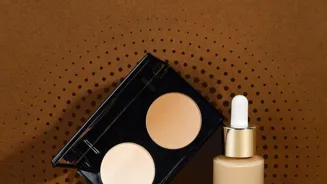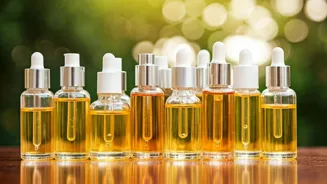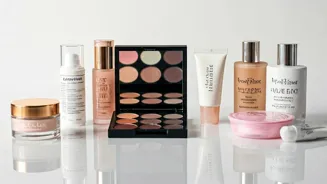What Are Undertones?
Skin undertones are the subtle hues beneath the surface of your skin that influence its overall appearance. They're distinct from your skin's surface color,
which can change with sun exposure or other factors. Undertones typically fall into three main categories: cool, warm, and neutral. Identifying your undertone is a crucial step in choosing the right foundation, concealer, makeup, and even clothing colors that will best complement your complexion. Paying attention to these underlying colours makes a huge difference to how well make-up or clothing suits you.
Identify Your Undertone
There are several methods you can use to determine your skin's undertone. One common approach is the 'vein test'. Examine the veins on the inside of your wrist in natural light. If your veins appear blue or purple, you likely have a cool undertone. If they appear green, you probably have a warm undertone. If it's difficult to tell, and your veins appear to be a mix of both or are bluish-green, you may have a neutral undertone. Another method is to consider how your skin reacts to sun exposure. Those with cool undertones typically burn easily, while those with warm undertones tend to tan. Those with a neutral undertone often tan, but may sometimes burn.
Cool Undertones Explained
If you have a cool undertone, your skin has hints of pink, red, or blue. Your skin might be sensitive to the sun and may burn easily. For makeup, choose foundations with pink or rose undertones. When it comes to clothing, cool undertones look best in colours like blues, purples, and emerald greens. Silver jewellery will usually complement your skin tone beautifully. Look out for terms such as 'porcelain' or 'ivory' when searching for foundation shades. Often, people with cool undertones have lighter skin, but that isn't always the case; your undertone is a separate quality from your skin tone.
Warm Undertones Explored
Warm undertones are characterised by yellow, peachy, or golden hues. Individuals with warm undertones often tan well. When choosing makeup, opt for foundations with yellow or golden undertones. Clothing in warm colours like oranges, yellows, and earthy greens will complement your skin. Gold jewellery generally looks very attractive. When choosing foundation, words such as 'beige' or 'golden' will often be used to identify the shade. Be aware, too, that your skin tone may become warmer in the summer months due to sun exposure, but the undertone will stay the same. People with warm undertones are often of Asian or African descent.
Neutral Undertones Unpacked
If you have a neutral undertone, your skin has a balanced mix of both warm and cool tones. You may find that both gold and silver jewellery look good on you, and you may be able to wear a wider variety of colours in clothing. You may find it difficult to identify your undertone using the usual methods. For makeup, neutral undertones can often wear foundations that are described as 'beige' or 'ivory', and will generally work well with foundation formulas that are described as 'neutral'. You are lucky! When it comes to clothing, most colours will suit you, although, with all the different options, it is still useful to experiment to find what looks best on you.
Makeup For Undertones
Once you've identified your undertone, you can start choosing makeup that complements your skin. For cool undertones, look for foundations with pink or rose undertones, and choose lipsticks and blush with cool shades like pink, berry, or mauve. For warm undertones, opt for foundations with yellow or golden undertones, and experiment with warm lipstick shades like coral, peach, or bronze. Neutral undertones offer the most flexibility, but it is best to test out a range of foundations to see which suits your individual needs, and you can wear a variety of colours in lipsticks, blushers, and eye makeup. Remember to try before you buy!
Clothing For Undertones
Your undertone also plays a significant role in choosing clothing colours that will best suit you. Cool undertones look fantastic in cool colours such as blues, purples, and emerald greens. Warm undertones are complemented by warm colours like oranges, yellows, and earthy greens. If you have a neutral undertone, you can experiment with a wider range of colours. Wearing the right colours can make your skin appear brighter and healthier. When you are in doubt, hold the item of clothing up to your face in natural light and see how it makes your skin look. Is it radiant, or is it dull?
Beyond the Basics
Understanding your undertone is just the starting point. Consider your skin's overall tone, such as how light or dark it is. Some people may find that their skin tone changes during the year as they get more or less exposure to sunlight. Also, consider the intensity of the colours you choose. Once you are familiar with your undertone, you will be better able to make choices that complement your skin. Don’t be afraid to experiment and find what works best for you. Makeup and fashion should be enjoyable and allow you to express yourself in a way that makes you feel confident.




